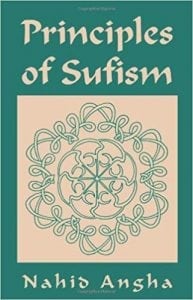The book makes for an interesting and engaging read, especially for those who have no background knowledge of what Sufism is.
The book makes for an interesting and engaging read, especially for those who have no background knowledge of what Sufism is.
This book consists of a concise introduction to Sufism, also known as the mystical branch of Islam. It attempts to explain the origins of Sufism, whilst simultaneously attesting that both the school and the word it denotes are as mysterious as the whole practice of the Sufis. The Sufis are referred to as pious individuals who are “searchers for truth, not performers of rhetoric.” The author argues that the road to Sufism’s origin is difficult, even for accomplished scholars, and this is notably due to the unfamiliarity of the researchers with not only the beliefs and mentality of the Sufis, but also with the nuances of the Arabic language. There is also the overall difficulty of attempting to explain “a way of understanding that transcends the limits of human knowledge”.
Dr. Nahid Angha presents and details the twelve basic principles of this school of spiritual knowledge, which were passed on to her through the instruction of her father, late Moulana Shah Maghsoud.
Summary of the Book
At the beginning of the book, the author attempts to define Sufism, and explains that, since all the principles that underlie the instruction of Sufis are based on the Qur’an, “it is impossible to relate Sufism to any religion outside of Islam”. At the same time though, “the search for true understanding and abstract knowledge of reality is a universal quest”, and Sufism is Islam’s way of expressing this universal quest.

The introduction further explores the origin of the school of Sufism and the reasons as to why it is often not fully understood today. It argues that the actual birth of Sufism as a way of thought and practise was subsequent to the advent of Islam. It goes onto analyse the roots of the word Tasawouf (Sufism) and Ahle Suffe (People of the Platform) and the spread of their path after the Prophet (ﷺ) passed away. According to Angha, “all legitimate Sufi schools trace their ultimate origins back to the original group of the Prophet’s spiritual disciples.”
As for the potential origins of the word Tasawouf, Angha declares that “actually no one knows the origins” of the word. It is best understood through the explanation of Imam Ali, one of the most influential figures amongst Sufis, who consider him as a Valli (the Guide).
According to Imam Ali, Tasawouf is an acronym of four letters (TSWF), with each letter representing one stage or quality of a Sufi. One who perfects the twelve principles of TSWF is a Sufi. T stands for three practises: Tark (abandonment), Tubeh (repentance), and Tugha (virtue). S stands for three qualities: Sabr (patience), Sedgh (truthfulness and honesty), and Safa (purity). W stands for Wud (love), Werd (Zekr and rememberance), and Wafa’a (faithfulness). Lastly, F represents another three qualifications; Fard (solitude), Faghr (poverty), and Fana (annihilation). The author attempts to explain the meaning of each practise and their related disciplines and manners, often drawing upon the wisdom of the ancient Sufis.
Review of the Book
The book makes for an interesting and engaging read, especially for those who have no background knowledge of what Sufism is. It is written with a wide, yet mature audience in mind and uses a simple, yet deep level of language. Each terminology is very well defined. The apparent effort of the author, to not use technical words and expressions that would slow the readers’ understanding process, is appreciable.
Nahid Angha, being not only the daughter of a major Sufi master but also the co-founder of the International Association of Sufism and the author of several works, is far from being a novice in the field of Sufism. The seriousness and reliability of her explanations, therefore, should not be doubted. She has written a book which is a smooth and easy read and has been conveniently divided into twelve different chapters, one for each Sufi principle.
The visible love and fascination of Angha for her discipline can be felt through her writing, and this personal bias – certainly not displeasing – is further evident when she is caught quoting her own father. Each chapter is more or less of the same length – they vary from three to seven pages, except for the one-page long chapter 9 on Wafa’a (loyalty) – and are introduced by a quote from a new Sufi master each time.
The book is sprinkled with profound and beautiful sayings, for example: “Sufis say that the illumination of the heart should remain the goal of a human being, and such illumination is accessible but hidden behind the veils of nature” (page 26). Another example would be: “True lovers ponder not the bright array of others; they are measured with the scales of patience” (page 41), and “I searched for freedom, I found it in solitude. I searched for serenity, I found it in silence” (page 91).
However, after finishing this book, the understanding of what Sufism truly is remains somewhat unclear in the head of the average reader, and that is due to a, possibly deliberate, lack of clarity from the author.
For instance, when Angha states that “believers [of Sufism] are those who have mastered profound and mysterious principles introduced by Islam, principles never classified before” (page 8), one does not quite understand what she specifically means. The author emphasises all along that the reader should try to figure out “the rest” on his own and search within himself – which may leave some readers rather dissatisfied.
Furthermore, there is an overuse of the words “mysterious” and “secret” throughout the book, and it seems that Angha has purposely tried a little too hard to maintain an aura of mystery around Sufism, instead of getting straight to the point and explaining what it is. For example, when Imam Ali is being referred to as a “mysterious teacher” (page 9), one wanders whether the use of the word “mysterious” again is necessary. Similar occurrences are aplenty.
Additionally, even though it is mentioned throughout the book that the instructions of the Sufis are based on the Qur’an and hadith, the lack of clear references at times is another weakness. A specific instance for example, is when the author states “it is narrated from Amir-al-Moumenin Ali” (page 9) and yet the sentence fails to provide any hadith reference, nor is there an adequate footnote.
Moreover, as the author points out, “there have been many debates concerning the origin of Sufism and how this school of inner knowledge was established” (page 3), and yet she chooses to detail only one version of the history, whilst overlooking all the others.
Last but not least, this book fails to address certain aspects pertaining to Sufism, notably the criticism this mystical school faces from within the Muslim community itself.
On a more positive note, the Muslim reader, whatever school of thought he or she may belong to, is easily able to relate to a multitude of concepts explained in the book, which pertain to basic akhlaq (ethics), beliefs and practises they have presumably been familiarised with. For instance, Angha speaks about cutting the strings of attachments and battling the evil forces of selfishness, greed, and jealousy within oneself. She emphasises the importance of constantly correcting one’s shortcomings and practising praiseworthy qualities like politeness, hospitality, and humility (chapter 1, principle of Tark – abandonment).
Conclusion
In conclusion, even though some aspects of Sufism are missing from this book, the content is engaging enough to evoke curiosity in the reader and encourage him/her to read further about Sufism and explore this esoteric path more deeply. Despite not allowing the reader to fully grasp and understand Sufism in one go, Principles of Sufism makes for a good first approach, and will equally appeal to the spiritually oriented European as it will to the Muslim reader.





